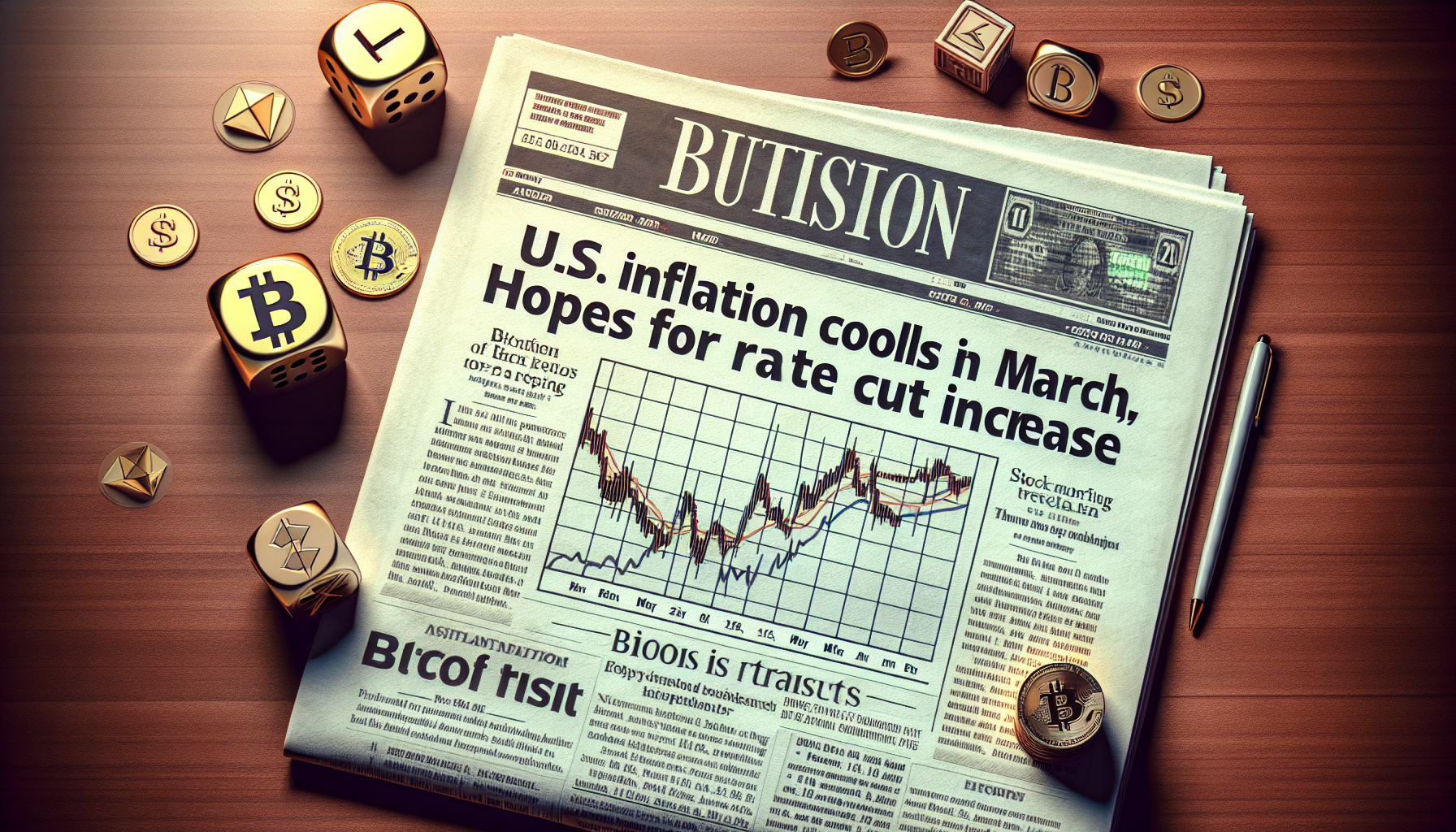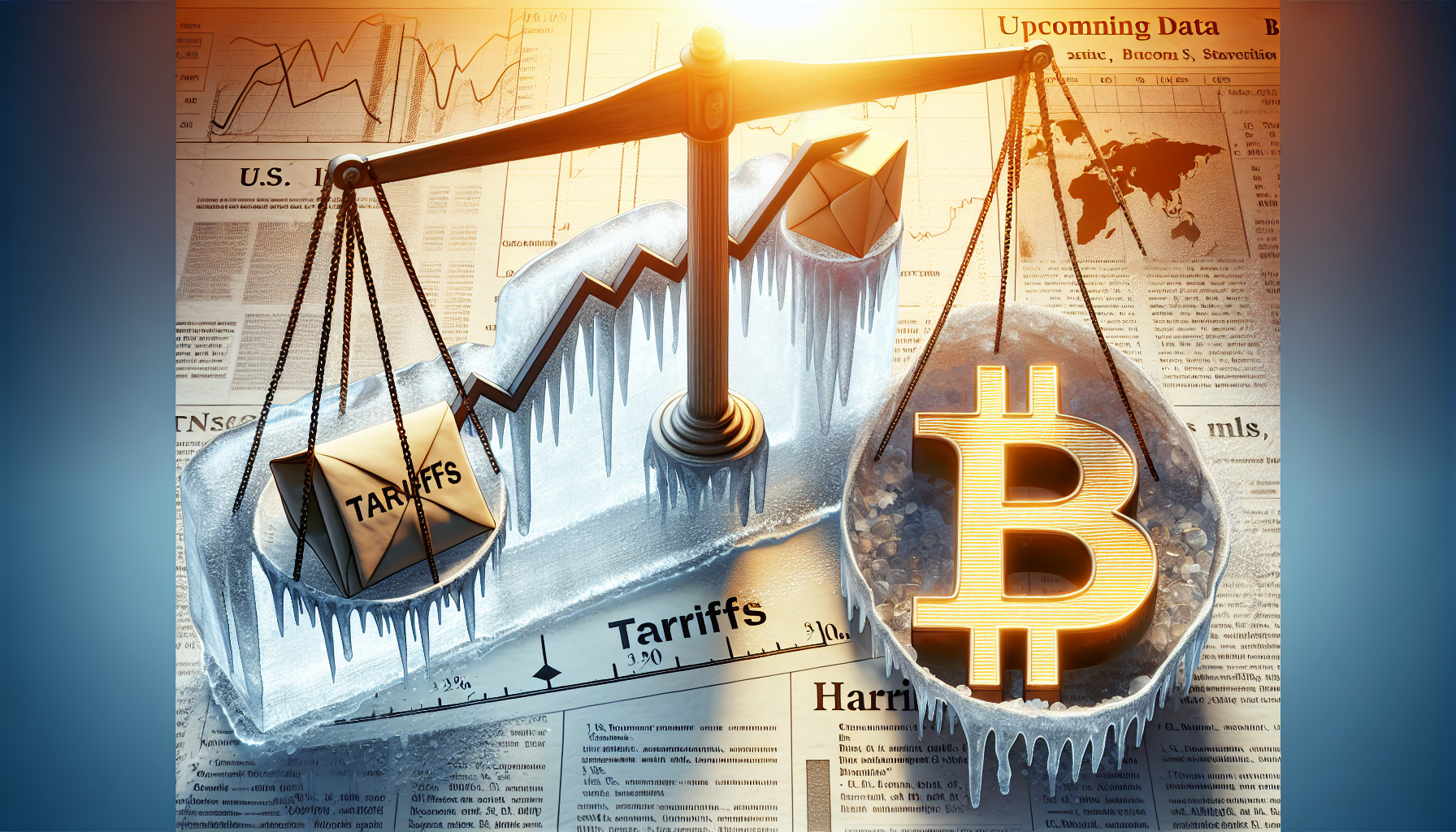U.S. Inflation Cools in March: What It Means for Bitcoin and Fed Rate Cuts
The latest U.S. inflation data has sent mixed signals to financial markets, with the Consumer Price Index (CPI) unexpectedly declining in March while core inflation remained subdued. This development could reignite discussions about Federal Reserve rate cuts, though recent tariff announcements add uncertainty. Meanwhile, Bitcoin and equities show divergent reactions, highlighting the complex relationship between inflation, monetary policy, and digital assets.

March CPI Report: Key Takeaways
The U.S. Bureau of Labor Statistics reported a 0.1% month-over-month decline in headline CPI for March, defying economist expectations of a 0.1% increase. Year-over-year inflation slowed to 2.4%, below forecasts of 2.6% and February’s 2.8% reading. Core CPI, which excludes volatile food and energy prices, rose just 0.1% monthly—half the predicted 0.3%—while the annual core rate eased to 2.8% from 3.1% in February.
Why This Inflation Slowdown Matters
The softer-than-expected inflation figures suggest that the Fed’s aggressive tightening cycle may finally be cooling price pressures. However, the data was collected before President Biden’s recent tariff announcements, which could reignite inflationary pressures in the coming months. This timing discrepancy adds complexity to the Fed’s policy outlook.
Market Reactions: Bitcoin Rises, Stocks Retreat
Following the CPI release, Bitcoin (BTC) climbed modestly to $82,000, reinforcing its appeal as an inflation hedge. In contrast, U.S. stock futures dipped, with the Nasdaq 100 down 2.7% and the S&P 500 falling 2.1%. This divergence underscores Bitcoin’s evolving role as a macroeconomic indicator, distinct from traditional equities.
Fed Rate Cut Expectations Shift
Prior to the CPI report, traders had scaled back expectations for a May rate cut, with odds dropping to just 17%. However, the June meeting now appears more likely, with a 75% probability of at least a 25-basis-point reduction. The Fed’s next moves will hinge on upcoming data, including Friday’s Producer Price Index (PPI) report.

Tariff Uncertainty Looms Over Inflation Outlook
Last week’s sweeping tariff announcements initially triggered market panic, though a temporary 90-day pause provided some relief. The delayed implementation means future inflation readings could reflect higher import costs, complicating the Fed’s decision-making process.
Bitcoin’s Role in an Inflationary Environment
Bitcoin’s positive reaction to cooling CPI data suggests investors view it as a hedge against both inflation and monetary policy uncertainty. If tariffs reignite price pressures, BTC could see further upside as investors seek alternatives to depreciating fiat currencies.
What’s Next for Markets?
Key factors to watch in the coming weeks include:
- PPI Data: Friday’s report could reinforce or contradict the CPI’s disinflationary trend.
- Fed Commentary: Officials may signal whether March’s data alters their rate-cut timeline.
- Tariff Impact: Markets will assess whether delayed tariffs mitigate near-term inflation risks.
- Bitcoin Demand: Sustained BTC strength could indicate growing institutional interest amid macro uncertainty.
Conclusion: Market Implications for the Coming Weeks
The March CPI decline offers hope that inflation is moderating, potentially paving the way for Fed rate cuts later this year. However, tariff-related uncertainties and upcoming economic data could sway market sentiment. Bitcoin’s resilience suggests it remains a favored asset in volatile macroeconomic conditions. If inflation reaccelerates due to trade policies, both equities and crypto may experience heightened volatility, with BTC likely benefiting from its scarcity and decentralized nature. Traders should monitor Fed signals and geopolitical developments closely, as these will dictate short-term market movements.

